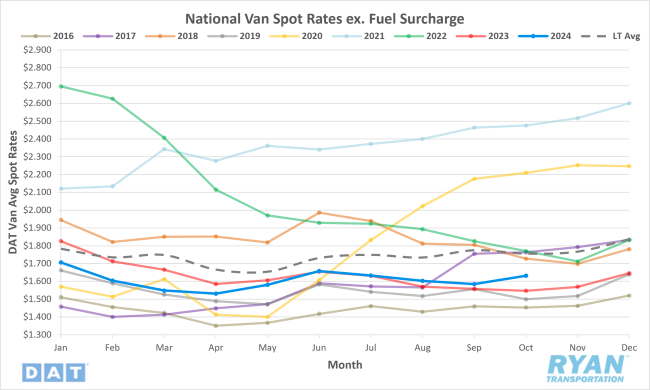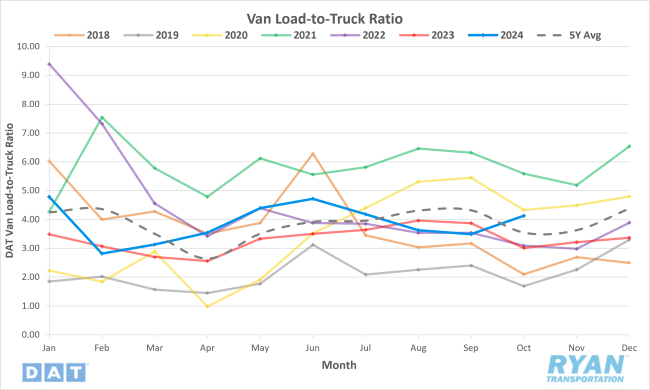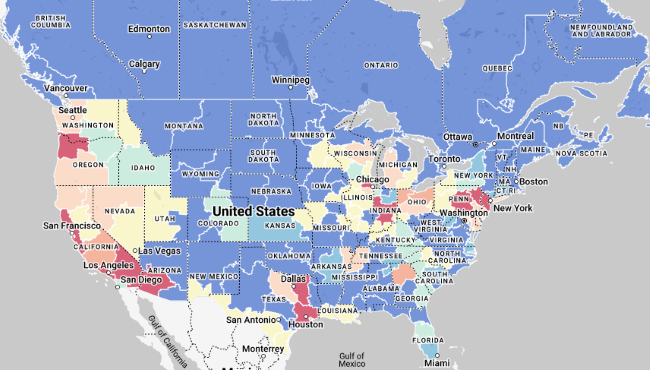Back to November 2024 Industry Update
November 2024 Industry Update: Dry Van
Average dry van rates spiked in October after three months of declines as volumes surged.
Spot Rates

Key Points
- The national average dry van spot rate, excluding fuel, increased 2.9% MoM, or roughly $0.05, in October, to just over $1.63.
- Compared to October 2023, the average spot linehaul dry van rate was 5.4% higher YoY but remains 7.1% below the LT average.
- The initially reported national average dry van contract rate, exclusive of fuel, increased slightly by 0.8% MoM in October and was virtually flat compared to October 2023, registering under $0.01 higher.
Load-to-Truck Ratio

Key Points
- The dry van load-to-truck ratio (LTR) increased by 18.3% MoM and is 37.2% higher compared to October 2023.
- Compared to the 5-year average, the dry van LTR registered 16.6% higher in October.
Market Conditions

Dry Van Summary
The most recently released for-hire trucking ton-mile and revenue index (TTMI) and American Trucking Associations (ATA) For-Hire Truck Index show slight increases in seasonally adjusted trucking ton-miles and tonnage, suggesting freight volumes may have bottomed out. Professor Jason Miller said, “The TTMI showed some strengthening in seasonally adjusted for-hire trucking demand, providing more confidence that freight volumes have indeed found a bottom and, with interest rate cuts coming, set for some improvement, especially in the first half of 2025 as those cuts start to have time to work through the economy.” The ATA report in August was the second sequential climb, signaling a potential upward trend. According to ATA Chief Economist Bob Costello, “August tonnage levels rose to the highest since February 2023. Not only does the latest robust gain show freight levels are coming off the bottom, but so does the sequential pattern over the last eight months. Every time tonnage falls, it is higher than the previous low. This month-to-month pattern is more important than looking at the year-over-year percent changes since we are at an inflection point in the freight market.”
The Logistics Manager’s Index (LMI) indicates expansion in the logistics industry, driven by inventory restocking, especially among downstream retailers, signaling a seasonal demand rebound. Rising inventory levels are helping alleviate upstream supply chain pressures; however, transportation capacity is stabilizing with potential contraction expected. With the ILA strike, East and Gulf Coast port disruptions occurred, but West Coast ports saw an increase in volumes. Import volume overall is near record highs but without a corresponding increase in dry van truckload volume. To summarize Professor Miller, import mix has shifted away from consumer goods (e.g., toys, games and sporting equipment) toward semiconductors and solar cells. This reduces the demand for inland dry van truckload freight, since these items generate less long-haul trucking demand.